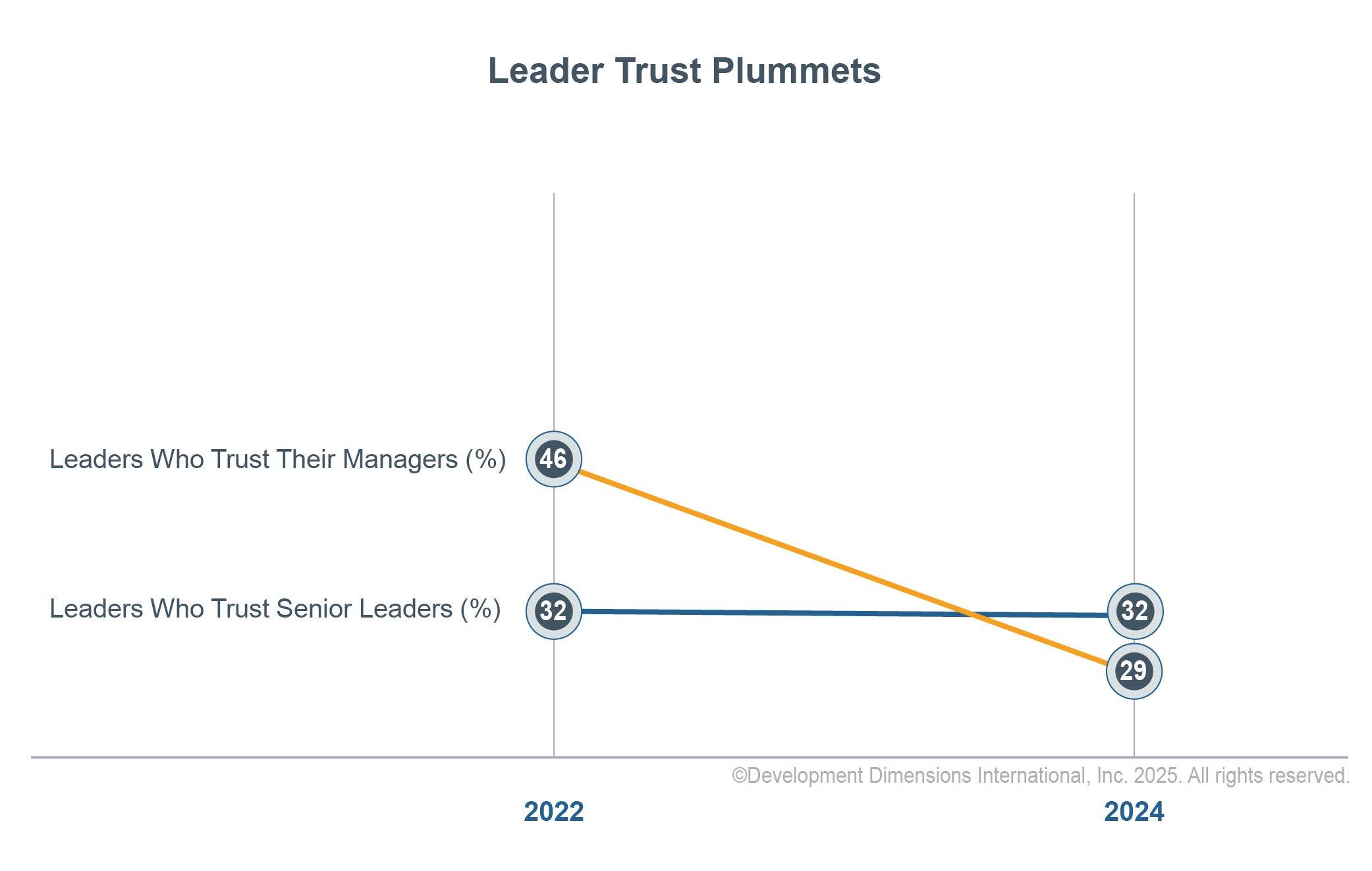Communication Is the Backbone of Effective Leadership
Every day, leaders communicate thousands of times—and every interaction matters.
That’s the reality organizations face. A poorly run meeting derails productivity. Unclear feedback leaves employees confused. A tone-deaf email tanks morale. Meanwhile, the big moments like launching a new strategy, navigating a crisis, and inspiring change demand even more.
When communication fails at any level, strategies stall. Engagement drops. Teams underperform.
Leadership communication isn’t about charisma or having the loudest voice in the room. It’s about something much more difficult—and more powerful: creating connection, building trust, and helping others understand where they’re headed and why it matters.
When done well, leadership communication drives everything that counts: performance, engagement, retention, and culture. It’s not a “soft skill”—it’s the core infrastructure behind decision-making, coaching, conflict resolution, and leading change.
And the best part? It’s a skill any leader can learn. With the right training and support, they can grow into communicators who lead with clarity, empathy, and impact. Whether guiding a team through tough feedback or rallying them behind a bold new vision, communication is the difference between failure and success.
What Is Leadership Communication?
At its core, leadership communication means sharing information, vision, expectations, and feedback clearly, consistently, and strategically. It involves expressing ideas in a way that’s authentic, engaging, and easy to understand—so people stay focused, absorb the message, and remember it.
It’s not just talking. It’s listening. Effective communication requires leaders to actively listen and adapt messaging to ensure it's relevant and impactful.
And most importantly, it’s about behavior—how leaders show up in the everyday moments that build or break trust. Leadership communication isn’t a talent—it’s a discipline that anyone can practice. It’s a learnable and improvable skill.

Why Leadership Communication Matters More Than Ever
According to DDI’s Global Leadership Forecast 2025, trust in leadership has collapsed. In just two years, trust in immediate managers nose-dived from 46% to a mere 29%—a staggering 17-point drop.
Today’s leaders must engage remote and hybrid teams, navigate near constant change, and have tough conversations to retain top talent. In an era where information moves fast and pressure runs high, leaders can’t afford to be unclear or disconnected.
When communication is done well, people stay aligned. They feel seen. They know where they’re going and why it matters. When it’s done poorly, even the best strategy falters.
Examples of Good and Bad Leadership Communication
The difference between good and poor leadership often comes down to small decisions in communication. The right words, delivered at the right time in the right way, can inspire trust. The wrong approach—even with good intentions—can quickly create confusion or damage morale.
I once coached a mid-level manager who decided to announce a work schedule change by email. The message was short, directive, and offered no explanation or invitation for feedback. Employees felt blindsided and devalued. Rumors flew. Engagement dropped.
Now picture the same leader handling it differently: bringing the team together, explaining the “why” behind the change, and inviting questions. One employee brings up a childcare conflict, which the leader addresses thoughtfully. The change still happens—but the team feels heard, involved, and respected.
On another occasion, I worked with a frontline leader who avoided a tough conversation about underperformance with an employee. When the issue escalated and they issued a formal warning without any prior discussion, the employee was devastated and left the company.
Contrast that with a leader who addresses the issue early in a one-on-one, listens to the employee’s challenges, and co-creates a plan to improve. That leader not only salvages performance but builds trust and respect in the process.
Communication doesn’t just move information. It changes outcomes.
Core Communication Skills Every Leader Needs
What do leaders who communicate effectively have in common? They listen. They empathize. They make people feel valued and informed—even in challenging conversations. There are five essential skills leaders can develop to become better communicators.
1. Active Listening
Definition: Fully focusing on and understanding what the speaker is saying before crafting a response.
Common Mistake: Jumping in with advice or opinions before confirming understanding. Nodding or saying "I hear you" without actually engaging with what’s being said.
Put It into Practice: Before replying, paraphrase what the speaker said. Try: “What did you hear them say?” or “How did that land for you?” Then check: "Did I get that right?"
2. Empathy
Definition: Recognizing and validating someone’s emotions, even when you can't fix the situation.
Common Mistake: Confusing empathy with sympathy or assuming you must feel the same emotion to empathize. Leaders sometimes skip validation and move straight to fixing or minimizing (e.g., “At least…” or “You should…”), which can feel dismissive.
Put It into Practice: You don’t need to agree to show empathy—just acknowledge the emotion. Try statements like “That sounds frustrating,” “You seem concerned about…,” or “I can see this really matters to you,” before problem-solving.
3. Giving and Receiving Feedback
Definition: Delivering and receiving feedback in a way that is clear, respectful, and designed for growth.
Common Mistake: Sugarcoating difficult feedback to avoid discomfort or offering vague praise like, “Good job,” with no specifics.
Put It into Practice: Use the STAR model when giving feedback: Situation/Task, Action, Result. Ask for feedback often with questions like, "What could I have done differently?" or "How did that come across?" Model openness by thanking people for their input.
4. Vision Storytelling
Definition: Explaining strategy or goals through clear, human-centered stories that make the vision feel real and motivating.
Common Mistake: Using abstract jargon or data dumps without connecting to team purpose or individual roles.
Put It into Practice: Connect through stories: “When did you first believe in this strategy?” or “How does this vision affect your team’s day-to-day?” Share these personal moments to make your message resonate.
5. Transparency
Definition: Being open and timely about what’s happening—even when the message is challenging to hear.
Common Mistake: Withholding updates to “protect” the team, treating shareable information as confidential, or oversharing details that create confusion.
Put It into Practice: Go beyond just facts—share thoughts, feelings, and rationale. A useful framework is: “Here’s what I know, what I don’t know yet, and what comes next.” Pairing clarity with context and care builds trust, even in uncertainty.
Skills like active listening, transparency, and effective feedback delivery aren’t just nice-to-haves. They are essential. Leaders must be able to share a compelling vision and make space for others to share their perspectives. They must know when to speak and, just as importantly, when to pause.
Great communication isn’t always polished—it’s human. It’s about honest, thoughtful conversations that build trust and move people forward.
Communication Pitfalls That Derail Even Good Leaders
Leaders rarely fail at communication because of indifference. They fail because they make avoidable mistakes.
⤷ Pitfall 1: Speaking Without Listening
Leaders who jump in with solutions or directives without hearing their team’s input often miss critical context—and damage morale in the process. This pattern is common: Many leaders were promoted for being strong problem solvers, but leadership success depends less on having all the answers and more on empowering others to find them. Coaching leaders to pause, ask open-ended questions, and summarize what they heard can transform this habit into a trust-building moment.
⤷ Pitfall 2: Assuming the Message Is Clear
Because leaders understand the background and intent of their message, it’s easy for them to assume others do too. But if employees misinterpret the message, the result can be confusion, misaligned actions, and frustration. Help leaders build the habit of checking for understanding, encouraging questions, and creating a space where teams feel safe to speak up if they’re unsure.
⤷ Pitfall 3: Hiding Behind Jargon
Leaders who rely on corporate speak to sound authoritative make messages harder to understand—and risk sounding insincere. Jargon kills clarity and alienates your audience. To avoid this pitfall, encourage leaders to ask themselves if there’s a simpler way to say something. The clearest way is often the most powerful.
⤷ Pitfall 4: Avoiding Tough Conversations
Leaders who avoid tough conversations in hopes that problems will resolve themselves often face the opposite: Problems grow in silence. Whether it’s about performance, behavior, or conflict, unspoken issues can erode trust and magnify over time. Coach leaders to address challenges early, directly, and with empathy before they escalate into bigger issues. Practicing difficult conversations in safe environments helps leaders build the confidence and behavior to overcome these common communication mistakes.
How HR and L&D Can Develop Leadership Communication Skills
The most effective communication skills aren’t taught in one-off workshops. They’re built through continuous, structured practice.
That’s where HR and L&D teams come in.
Start by offering targeted training like DDI's leadership development programs, tailored for each level of leadership to build core behaviors in real-world contexts. Supplement with ongoing coaching and mentoring that support skill application beyond the classroom.
Use assessment tools like 360-degree feedback to surface blind spots and track progress. Encourage leaders to reflect after key meetings—through journaling, peer conversations, or simple self-checks.
The key is consistency. Developing communication skills isn’t a sprint. It’s a loop of learning, practicing, receiving feedback, and improving.
The Key to Leadership Success Is Communication
Strong leadership without strong communication? It doesn’t exist.
Effective leadership communication is what binds teams together, propels strategies forward, and turns ideas into action. When leaders do it well, they build cultures of trust. When they don’t, they create friction and confusion.
If you’re in HR or L&D, make communication a centerpiece of your leadership development efforts. It’s not a bonus skill—it’s the backbone of everything leaders need to do well.
And most importantly, it’s something every leader can learn and improve.
About the Authors
Brittney Calhoun is an Associate Consultant dedicated to creating meaningful development experiences and empowering leaders to build self-awareness. When she isn’t helping leaders grow, she’s chasing adventure—road-tripping, snowboarding, hiking, or trying something completely new—all while soundtracking it with a carefully curated playlist, of course.
Liz Donohue is a DDI Consultant and an organizational psychologist passionate about helping leaders look inward and "pull back the curtain" to uncover their personal strengths and opportunities. Liz is equally passionate about foodie festivals, local art and music, and SUPing on the river.
Have a Question?
Frequently Asked Questions About Leadership Communication
-
What is leadership communication, and why is it essential for effective leadership?
Leadership communication extends far beyond public speaking or natural charisma. At its core, it encompasses the ability to clearly, authentically, and consistently convey vision, expectations, and direction, while also being responsive to your team through active listening and adaptation. This skill is essential because it builds connection and trust, aligns teams around shared goals, facilitates informed decision-making, and prevents strategic initiatives from faltering due to miscommunication or disengagement.
-
How can leaders improve their communication skills to build trust and engagement?
Leaders can improve their communication through intentional practice: listening actively, asking for and then incorporating feedback, and embedding empathy, vulnerability, and transparency in their delivery and messages to build trust and engagement. Supplemental techniques include using assessments to spot unconscious patterns, providing targeted leadership development training, and ensuring leaders apply new skills beyond the classroom.
-
What are the most common leadership communication mistakes and how do you avoid them?
Common pitfalls in leadership communication include talking without listening, assuming your message is understood, hiding behind jargon, and avoiding tough conversations. To navigate these challenges: pause to ask open-ended questions before responding, check for understanding, use simple language rather than corporate speak, and address sensitive issues promptly with honestly and empathy.
-
What communication skills do successful leaders have in common?
Effective leaders tend to master a set of core communication skills:
- Active Listening: Fully focus, paraphrase, and confirm understanding.
- Empathy: Recognize and validate emotions without feeling the need to “fix” immediately.
- Giving & Receiving Feedback: Be clear, timely, respectful, and open to learning.
- Vision Storytelling: Link strategy to meaning and human impact via stories rather than data dumps.
- Transparency: Share what you know, what you don’t yet know, and the reasoning behind decisions—even in uncertainty.
Topics covered in this blog

